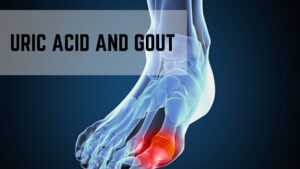What is arthritis?
Arthritis is a joint disorder featuring inflammation. A joint is an area of the body where two different bones meet. A joint function to move the body parts connected by its bones. Arthritis literally means inflammation of one or more joints.
Arthritis is frequently accompanied by joint pain. Joint pain is referred to as arthralgia. When four or more joints are involved, the arthritis is referred to as polyarthritis. When two or three joints are involved, it is referred to as oligoarthritic. When only a single joint is involved, it is referred to as monoarthritic.
How many types of arthritis exist?
There are many types of arthritis (over 100 identified). The types of arthritis range from those related to wear and tear of cartilage (such as osteoarthritis) to those associated with inflammation resulting from a misdirected immune system (such as rheumatoid arthritis). While osteoarthritis and rheumatoid arthritis are common types of arthritis, there are many other common and uncommon types of arthritis.
Other types of inflammatory arthritis include –
psoriatic arthritis,
ankylosing spondylitis, and
reactive arthritis.
Arthritis Symptoms
Joint pain can be caused by injury affecting any of the ligaments, bursae, or tendons surrounding the joint. Injury can also affect the ligaments, cartilage, and bones within the joint. Pain is also a feature of joint inflammation (arthritis, such as rheumatoid arthritis and osteoarthritis) and infection, and extremely rarely it can be a cause of cancer of the joint.
Symptoms and signs associated with joint pain can include
joint redness,
joint swelling,
joint tenderness,
joint warmth,
limping,
locking of the joint,
loss of range of motion of the joint,
stiffness,
weakness.
Symptoms of arthritis include pain and limited function of joints. Joint inflammation from arthritis is characterized by joint stiffness, swelling, redness, pain, and warmth.
Stiffness of the joint can lead to poor function.
Tenderness of the inflamed joint can be present with or without pain.
When large joints are involved, such as the knee, there can be loss of cartilage with limitation of motion from the joint damage.
When arthritis affects the small joints in fingers, there can be bone growth and loss of hand grip and grip strength of the hand associated with stiffness.
Arthritis of weight-bearing joints can lead to difficulty walking from poor joint function and arthritis pain.
Many of the forms of arthritis, because they are rheumatic diseases, can cause symptoms affecting various organs of the body that do not directly involve the joints.
Therefore, symptoms in some patients with certain forms of arthritis can also include –
fever,
gland swelling (swollen lymph nodes),
weight loss,
fatigue,
feeling unwell, and
even symptoms from abnormalities of organs such as the lungs, heart, or kidneys.



